
There are lots of ways to honour those who have passed away. One highly used or applied way is to create memorial or garden stones.
Garden stones can be placed at grave sites, along paths, or even inside homes. They can also decorate gardens, patios, or other outdoor spaces.
Memorial stones come in various sizes, shapes, colours, and materials. Some designs resemble natural rocks, while others are sculpted to form abstract designs. There are also decorative stones that feature images of loved ones.
Key takeaways
- Garden and memorial stones come in a variety of designs, for both male and female.
- Personal mementoes such as small images can be set in clear resin and bonded to the stone.
- Garden stones can be placed at the grave or in a garden or even indoors
- Memorial figures can be bonded to headstones or plinths.
Table of contents
Memorial stones can be created using different types of stone. The type of material is dependant on what the customer chooses.
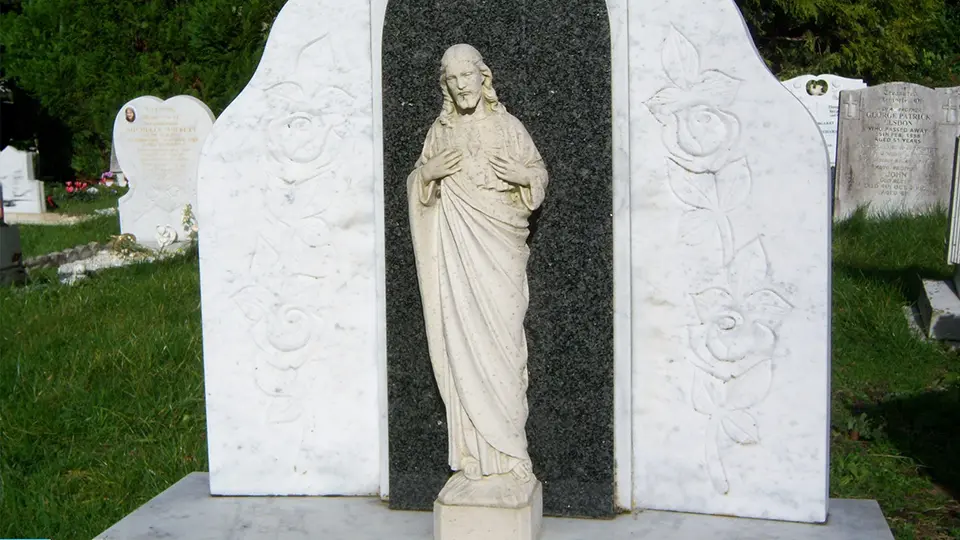
The placement of a monument, including its style and design, should match the needs and desires of the family. Ideally, this will include things that were important to the deceased.
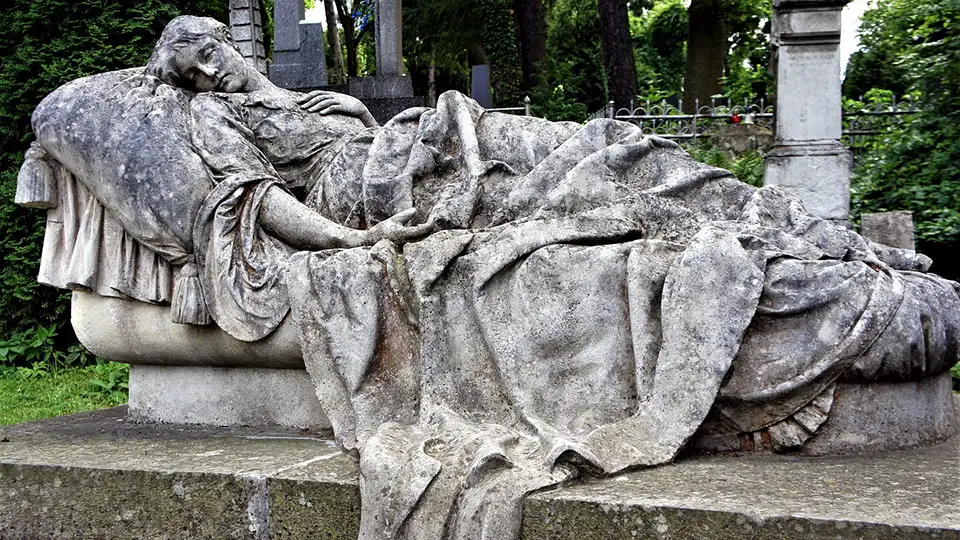
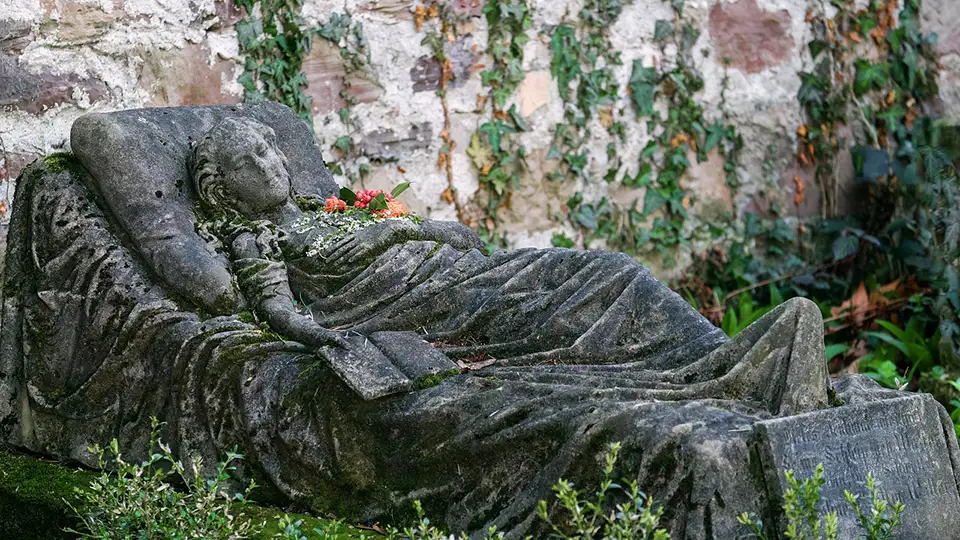

Memorial garden stone ideas
Choose an appropriate location. When choosing a spot for a memorial garden stone, look for a level surface that contains soil with good drainage. Avoid areas with heavy traffic or strong winds because these can damage monuments.
If you plan to install several stones, consider placing them around the perimeter of a patio, lawn, or flower bed. You could also put them in the centre of a circle, an oval, or a square by filling the interior with plants or flowers. Another option is to integrate small mementos, such as photos, personal objects, ashes, lockets, or jewellery, into each one. This can be carried out by immersing the objects in a two part fibreglass resin and hardener compound and then bonding to the stone. This way any objects will be well protected from the weather.
In general keep the number of stones low. Too many garden stones can overwhelm a landscape. A single sculpture may be enough, or a couple together.
Memorials carved out of a section from a tree trunk, like many wooden sculptures, can create a softer look compared to stone.

Keep stones simple. Try not to make your garden stones too ornate – keep things neat and clean. You want people to appreciate the beauty of the garden stone rather than focus on how intricate the carving looks. Allowing visitors to touch and interact with the stones is why some families often opt for simpler, more straightforward designs.

Consider the inscription. The phrase or verse you choose to engrave onto a larger stone, tombstone or monument should be thought out and personal to the deceased. If there’s room left over, use it for something else. Just stick to the facts and write about the deceased’s life and achievements.
Include details. Some other requisite things you might want to include are dates, names, birth date, age at death, date of death, date of funeral or memorial service, title or status held at the time of death, military honours rendered, and quotes.
For instance, if you were looking to honour someone who died while serving overseas, you wouldn’t only put their name on the grave marker; you’d also have “serviceman”, “servicewoman” or “veteran” added to the dedication, along with the date they died. You might include additional information such as a photo and quote.
Be sure to use the right terms when referring to the dead, both when talking about them and writing about them. For example it is common to draft the inscription in the mind of a third person, so that the inscription is open to all.
It’s indispensable to pay attention to the type and size of language used because some languages allow certain words to be read differently. So if you choose to use a particular font, know precisely how it appears. Your chosen stone mason will be able to advise you.
Always use proper grammar. Although the final decision regarding spelling and punctuation rests with the client, it’s always best to follow established grammatical conventions. Spell Checkers will help catch misspelt words, so don’t overlook this vital step. The person’s title should also be spelt correctly, for example, Mr, Mrs, Ms, Dr, or Prof.
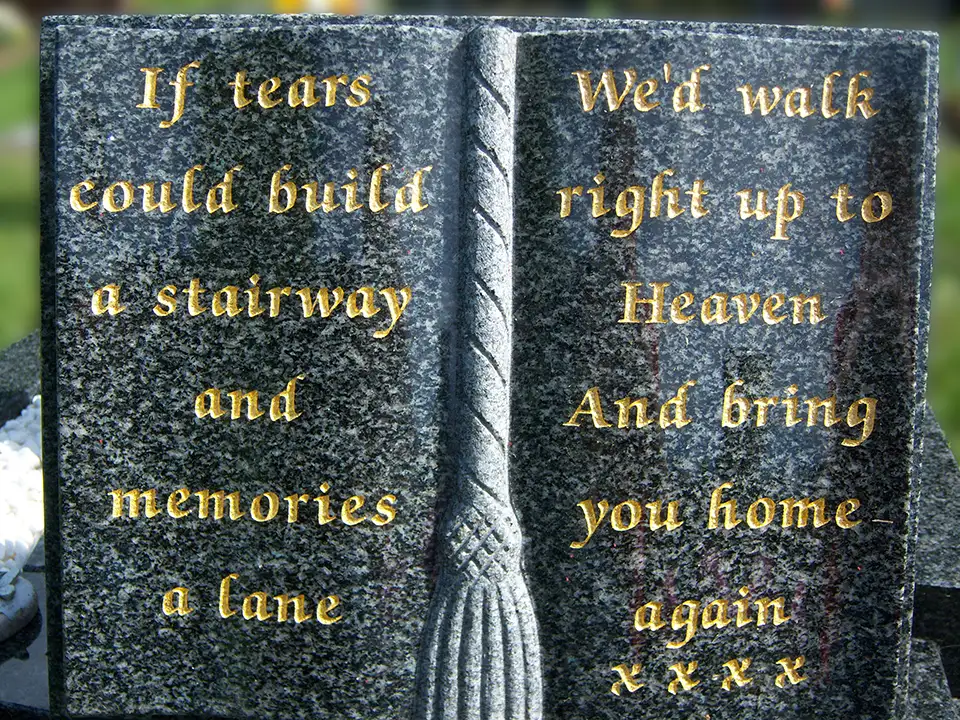
Be careful with abbreviations. It’s acceptable to abbreviate standard terms that aren’t used excessively within a sentence (i.e., “AJ” instead of Aaron John).
You may prefer to avoid abbreviated forms altogether by writing out the full name. In either case, use your judgement and be sure to include any necessary explanations when needed.
If the deceased lived before the era of or without formal education, then your selection should reflect more personal preferences than strict adherence to standard guidelines. You should consider whether or not you should use capitals for first and last names.

The main rule for gravestones
It may sound obvious but don’t leave the stone blank, unless there is a very good reason to do so. It does not look good when walking through a cemetery and having your eye drawn to the spot where you’re supposed to see an engraved headstone.
Memorial garden ideas: Garden stones for pets
Memorial garden stones for pets are loving tributes to pets that have passed on. When choosing these loving tributes, you have several factors to keep in mind. These include:
1. Shape
When looking at memorial garden stones for pets, two shapes are primarily available: rectangles and squares. Rectangular stones usually come with the most extensive range of options for customisation. Because of their relatively simple form, these memorials can be made into almost anything.
Whether you want a heart, flower, sunburst, cross, star, flag, or other symbols, with a rectangular tombstone, you can create just about any custom symbol you’d like.
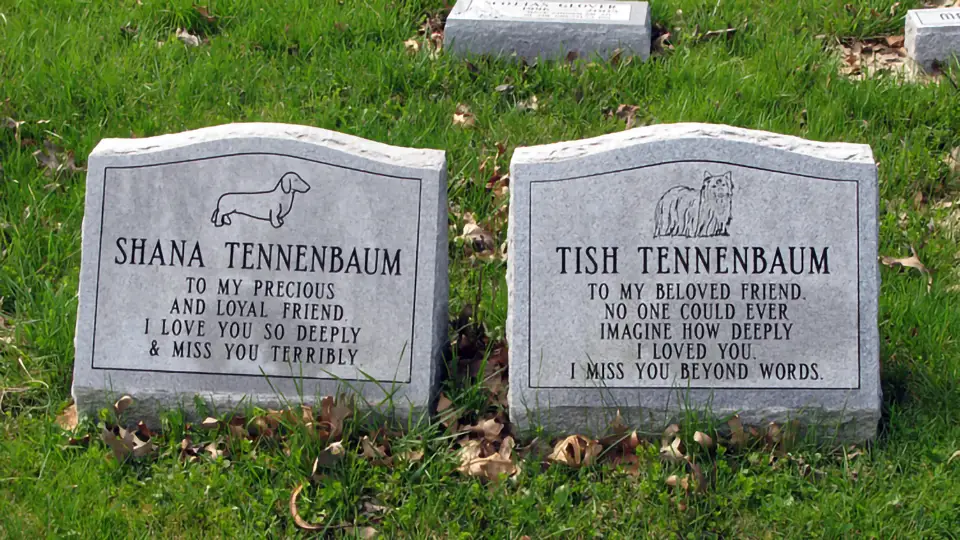
2. Portrait/Image
Most pet memorials incorporate an image of your pet alongside the engraving. This feature gives mourners a visual reference for your lost pet and allows the family and friends to connect with the memory of your loved one.
An abstract portrait could work very well if it emphasises the beauty of the animal rather than its personality. Remember, though, depending upon the size of the engraved area; it might take up most of the space of the stone itself!
3. Wording
Memorial gardens tend to fall into three categories: short obituaries, more extended biographies, and epitaphs. A short obituary is commonly enough room for a brief description, including dates.
4. Customisation
If you have extra room on your memorial garden stone, then you may feel inclined to add some customisations, such as customising the fonts used in the text.
5. Location
To ensure maximum visibility for your personalised pet memorial garden stones, consider placing them close to the front of the burial site. Keep in mind that some cemeteries will not allow you to put your items directly within the grave. If you choose to include a pet memorial garden stone, ensure that you have permission from the cemetery.
Memorial stones for Dad or male
If your father or son has passed away, you probably have many questions about dads’ memorial garden stones. Below are some requisite suggestions to consider when selecting memorial garden stones:
1. Traditional men’s graveside engravings
Generally, these will be more traditional designs and follow the standard “male silhouette” theme. However, over the years it has become more common practice to have a photograph embedded in resin and attached to the headstone. Often a simple yet elegant font style is chosen. Stone carvings such as can be seen in the image below are also a good choice.

2. Funerary art designs
Funeral art memorials aren’t limited to men. These designs feature realistic male silhouettes that appear to be wearing clothing similar to what the deceased was known for wearing.. They are less formal in style than portraits.
3. Personalised men’s graveyards
This memorial contains a portrait of the deceased person alongside a quote or saying showing their personality. Personalisation features include monograms, family names, a nickname, favourite phrases, religious slogans, or quotes.
Memorial stones for Mum or female
If your mum or daughter has passed away, you probably have many questions about memorial garden stones for moms or daughters. Below are some requisite suggestions to consider when selecting memorial garden stones for a daughter:
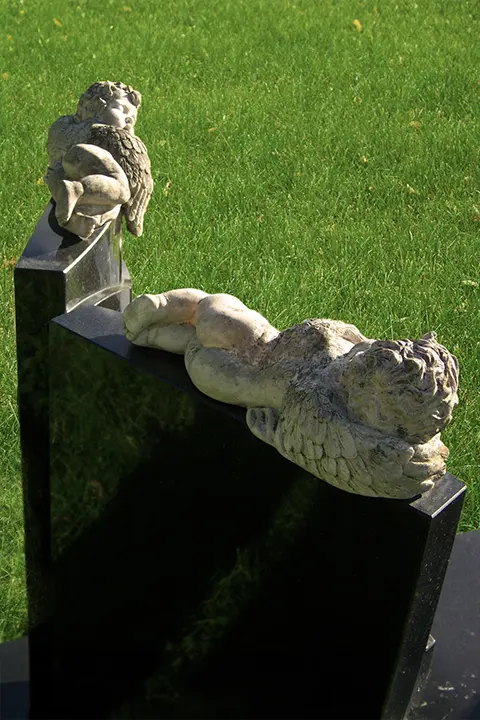
1. Traditional Women’s gravesite engravings
Women gravesites tend to come with floral wall sculptures and often include a small angel statue.. That said, there are still plenty of requisite options available if you’re looking for different styles.
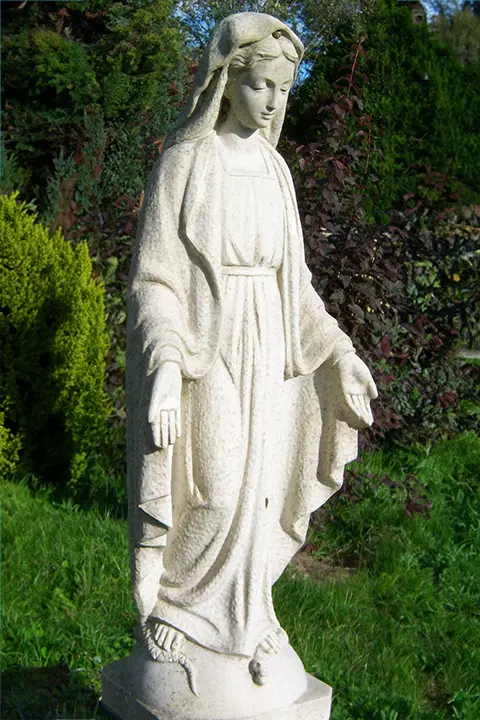
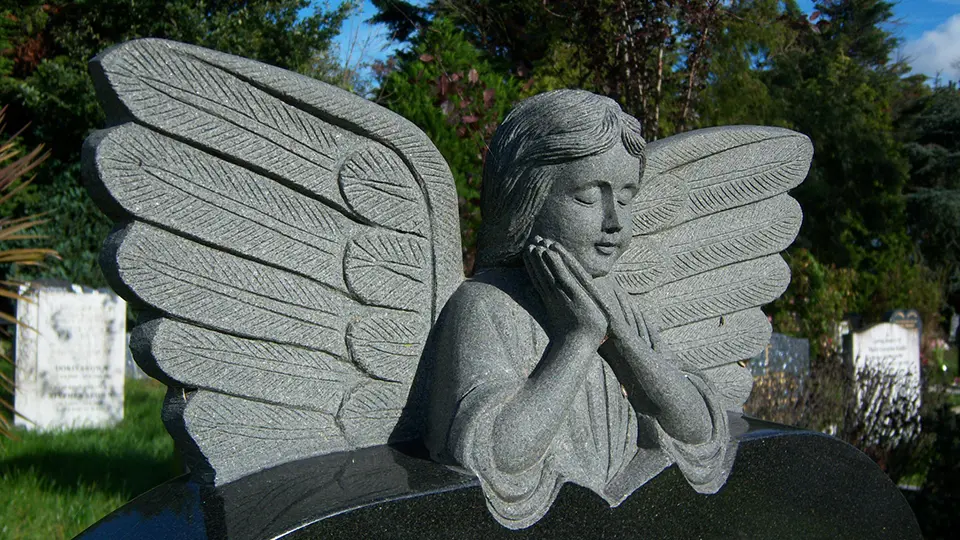

2. Funerary art designs
As with men, funeral art memorials are not only reserved for females. While they typically depict a lady with long flowing hair, they also feature other feminine aspects such as flowers, decorative pieces, angels, children, etc.
3. Personalised female graveyards
With a portrait of your mum, this would be among the top picks. It features a beautiful image of her, and it includes a quote that represents who she was.
Conclusion
In general, memorial and garden stones come in various shapes, sizes, colours, and materials. When designing your own, keep in mind that you can choose from several finishes, fonts, and personalization options. Also, remember with garden stones to consider how large the surface area of your garden is before deciding which choice is right for you. For more information on lower cost memorials & headstones please visit the link.




